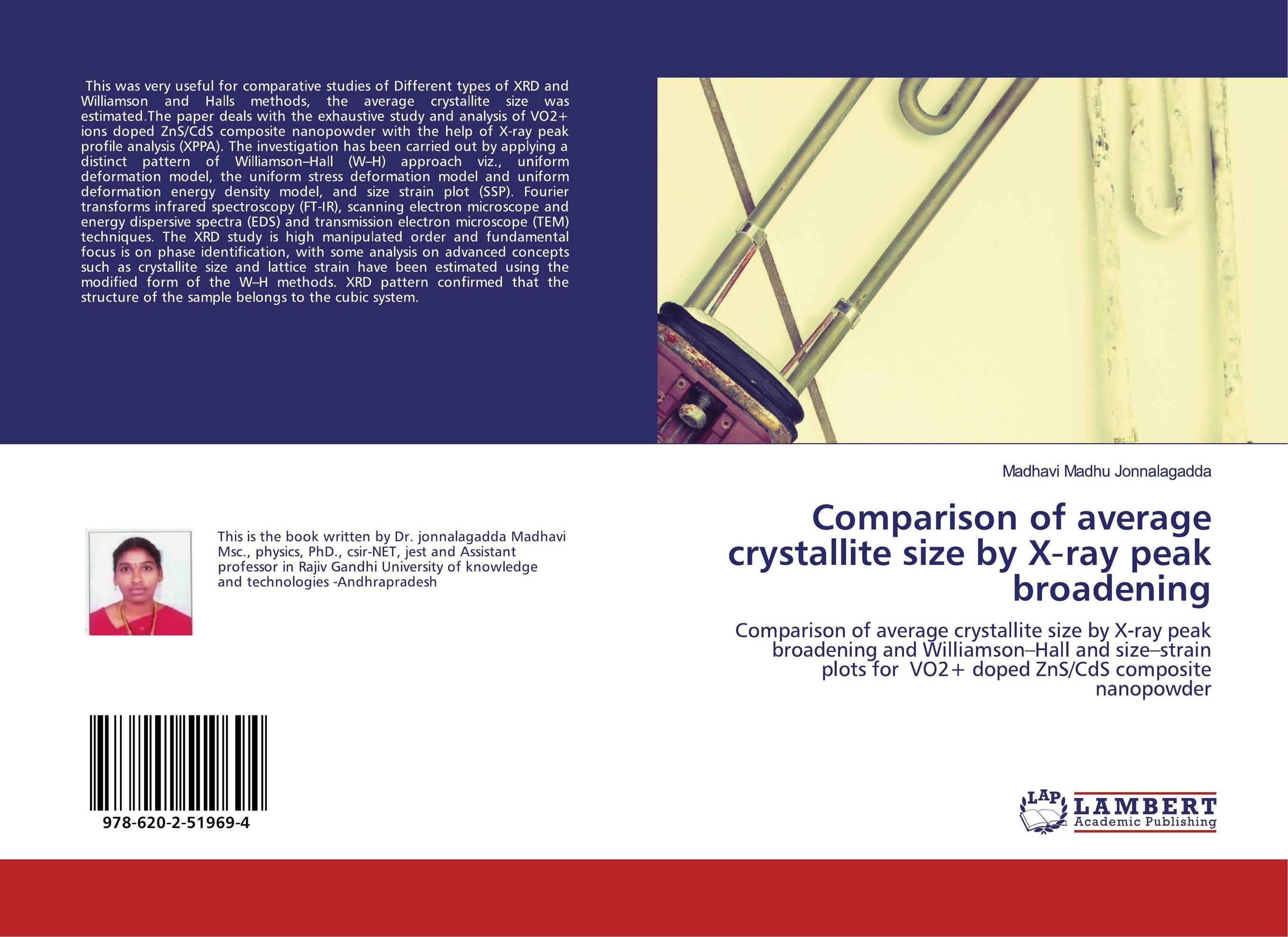| Поиск по каталогу |
|
(строгое соответствие)
|
- Профессиональная
- Научно-популярная
- Художественная
- Публицистика
- Детская
- Искусство
- Хобби, семья, дом
- Спорт
- Путеводители
- Блокноты, тетради, открытки
Comparison of average crystallite size by X?ray peak broadening. Comparison of average crystallite size by X?ray peak broadening and Williamson–Hall and size–strain plots for VO2+ doped ZnS/CdS composite nanopowder

В наличии
| Местонахождение: Алматы | Состояние экземпляра: новый |

Бумажная
версия
версия
Автор: Madhavi Madhu Jonnalagadda
ISBN: 9786202519694
Год издания: 2020
Формат книги: 60×90/16 (145×215 мм)
Количество страниц: 104
Издательство: LAP LAMBERT Academic Publishing
Цена: 32031 тг
Положить в корзину
| Способы доставки в город Алматы * комплектация (срок до отгрузки) не более 2 рабочих дней |
| Самовывоз из города Алматы (пункты самовывоза партнёра CDEK) |
| Курьерская доставка CDEK из города Москва |
| Доставка Почтой России из города Москва |
Аннотация: This was very useful for comparative studies of Different types of XRD and Williamson and Halls methods, the average crystallite size was estimated.The paper deals with the exhaustive study and analysis of VO2+ ions doped ZnS/CdS composite nanopowder with the help of X-ray peak profile analysis (XPPA). The investigation has been carried out by applying a distinct pattern of Williamson–Hall (W–H) approach viz., uniform deformation model, the uniform stress deformation model and uniform deformation energy density model, and size strain plot (SSP). Fourier transforms infrared spectroscopy (FT-IR), scanning electron microscope and energy dispersive spectra (EDS) and transmission electron microscope (TEM) techniques. The XRD study is high manipulated order and fundamental focus is on phase identification, with some analysis on advanced concepts such as crystallite size and lattice strain have been estimated using the modified form of the W–H methods. XRD pattern confirmed that the structure of the sample belongs to the cubic system.
Ключевые слова: XRD, W-H analysis, TEM



